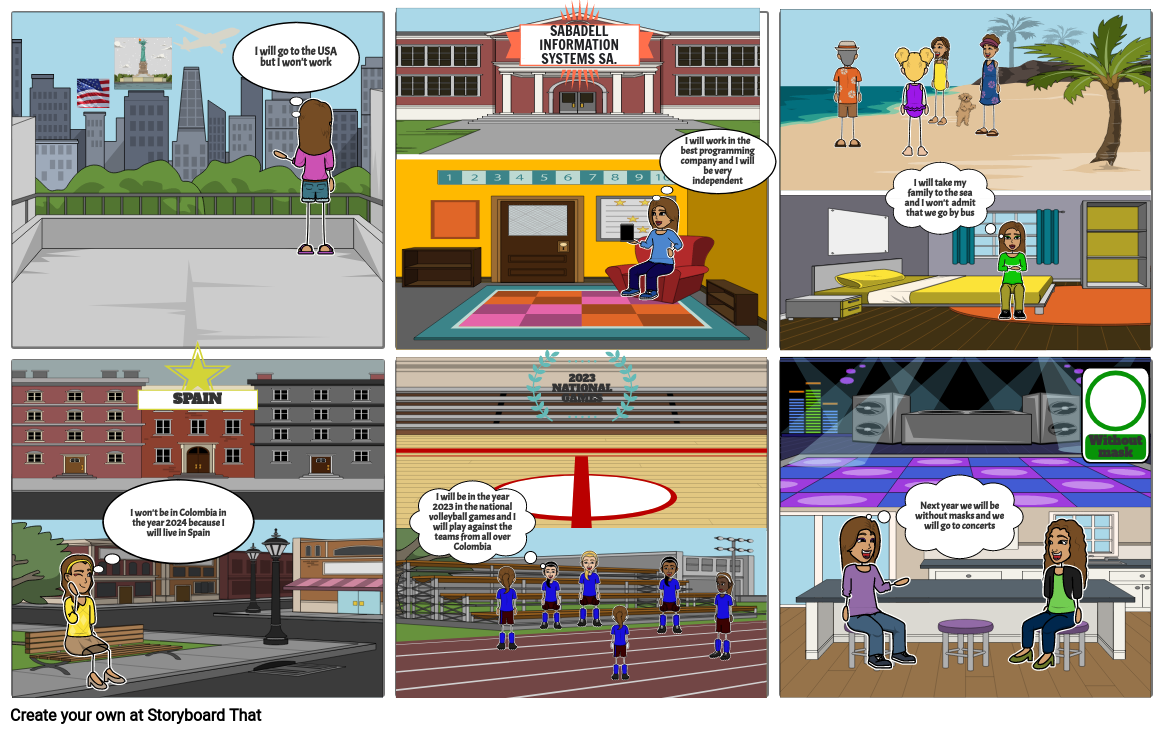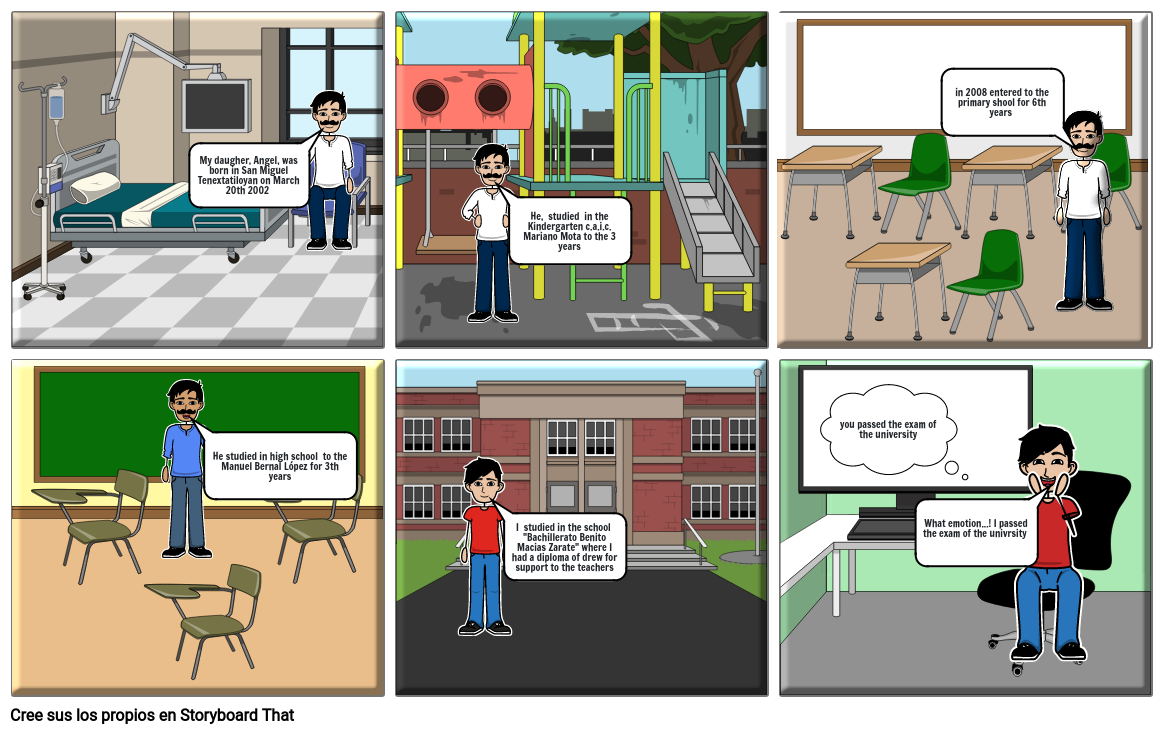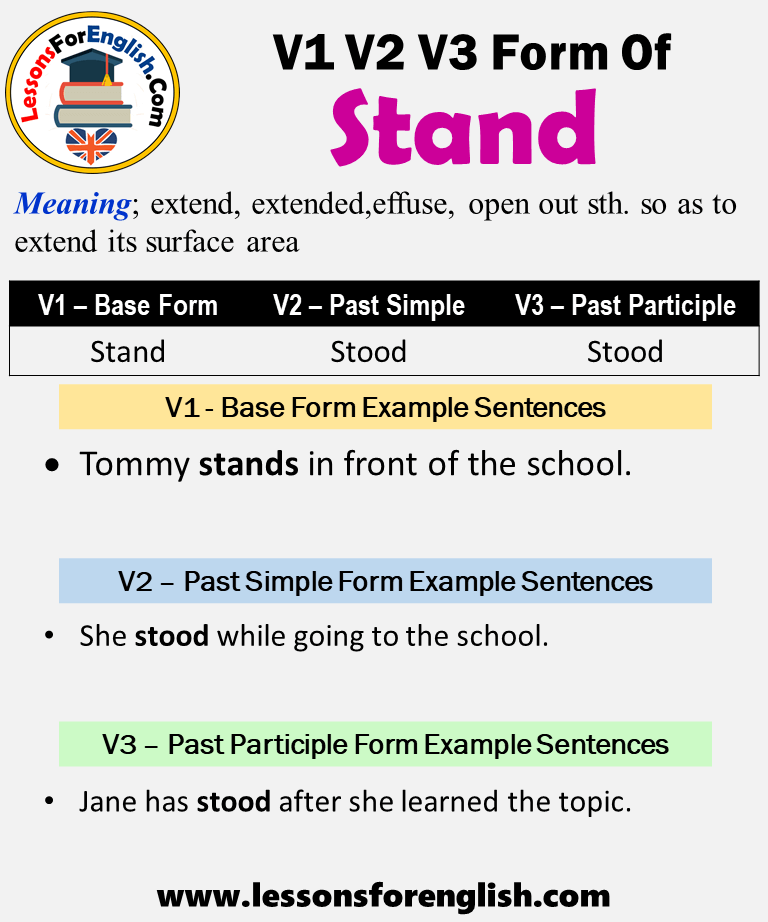
Complete the sentences using Past Simple
The past simple and the past participle of stand. Conjugation of the verb stand: Base Form/Infinitive without 'to': stand. Past Simple: stood. Past Partciple: stood. Present Partciple: standing. Third Person Singular: stands. Definition: 1. To support oneself on the feet in an erect position. 2. To be set, placed, fixed, located, or situated.

Oír de metano visión past simple affirmative exercises infraestructura
English Grammar Verbs Past tense Past simple Past simple Level: beginner With most verbs, the past tense is formed by adding -ed: called liked wanted worked But there are a lot of irregular past tense forms in English. Here are the most common irregular verbs in English, with their past tense forms: We use the past tense to talk about:

THE SIMPLE PAST TENSE Storyboard by hanria
Stand of Past Participle V3. The V3 form is identical to the V2 form. The V3 form is "stood". Stood is used in the past or present perfect tense. + In the present perfect tense, we use the word V1 as 'have + stood' or 'has + stood'. I, you, and we are used as 'have + stood'. 'has + stood' is used for he, she, and it.

PAST SIMPLE Storyboard by 99bc0705
In its past tense form, "stood," this means that when you want to describe an action that has already happened, you would use "stood" instead of "stand". Take a look at the table below for the conjugation of "stand" in the past tense. Now, let's see some examples of how to use "stood" in sentences: She stood up to leave the room.

Pin on V1 V2 V3 Form of Verbs
The past simple tense (sometimes called preterite, simple past or past indefinite) is the basic form of the past tense. This is one of the most common past tenses and can describe a lot of events. It is really important to know how and when to use this tense for daily conversation. But there are a lot of irregular past tense forms in English.

Simple Stand TabletKiosk
stood Past participle stood Model : stand Auxiliary : have, be Other forms: stand oneself / not stand Contractions Advertising Indicative Present I stand you stand he/she/it stands we stand you stand they stand Preterite I stood you stood he/she/it stood we stood you stood they stood Present continuous I am standing you are standing

Ćwiczenia Czas Przeszły Prosty Past Simple
past participle: (to) stand standing stood definition in Spanish in French in Italian Indicative Perfect tenses Continuous (progressive) and emphatic tenses Compound continuous (progressive) tenses Conditional Imperative Subjunctive *Blue letters in conjugations are irregular forms. ( example)

Stand Past Simple, Past Participle, V1 V2 V3 Form of Stand English Vocabs
Stand means: have or maintain an upright position, supported by one's feet V1 V2 V3 Form of Stand Synonym Words For STAND erect locate place put rank rise set settle cock dispose mount poise position be erect be on feet be vertical Example Sentences with Stand, Stood V1 V2 V3 Who stood? I can hardly stand. Samuel stood up again.

Past Simple Baamboozle
Simple Past Tense He/She/It stood. I stood. You/We/They stood. Past Continuous Tense He/She/It was standing. I was standing. You/We/They were standing. Past Perfect Tense He/She/It had stood. I had stood. You/We/They had stood. Past Perfect Continuous Tense He/She/It had been standing. I had been standing. You/We/They had been standing.

past simple Storyboard by anyelogabo
The past tense (past participle) form of "stand" is "stood." The infinitive of the word form is "stand." The present participle form is "standing." The past tense form is "stood" and past participle form is "stood." Understanding verb tenses The general grammar rules that govern past tenses are as follows.

Past Tense Of Stand, Past Participle Form of Stand, Stand Stood Stood
Past simple — stand in past simple stood (V2) . Future simple — stand in future simple is stand (will + V1) . Present Perfect — stand in present perfect tense is stood (have/has + V3) . Past Perfect — stand in past perfect tense is stood (had + V3) . stand regular or irregular verb? 👉 Is 'stand' a regular or irregular verb?

How to Use the Past Simple Tense Improve English Grammar
Stood is the past tense of the word stand. Stood is the past participle of the word stand. stand past form, verb forms, v1v2v3, Infinitive

PAST SIMPLE TENSE EXPLAINED CLEARLY Simple past tense, Tenses, Learn
You use Past Simple for finished past action. Past tense is usually specified with the following words: yesterday, ago, the day before yesterday, in 2017, last week/month/year, etc. They called me a minute ago. She went to the park yesterday. My family visited me last month.

Simple Stand Inventables
Past Simple Past Participle Gerund ; stand: stood: stood: standing [stænd] [stʊd] [stʊd] [ˈstændɪŋ] [stænd] [stʊd] [stʊd] [ˈstændɪŋ] Trainer Settings. Break into pronouns . Shuffle cards . Nominal forms . Past Simple Past Participle Gerund. Simple tense . Present Simple Past Simple Future Simple.

Simple Past Tense Transforma
Grammar Reference Irregular Verbs List Definition: To Stand Irregular verb: To Stand Verb conjugation: Stand - Stood - Stood Meaning of 'To Stand' To be in a vertical position with the weight on the feet To get into this position Conjugation of verb 'Stand' Irregular Verbs Following a Similar Pattern Verbs like: Subscribe to Ad-Free Browsing

Pin on A1 English
Past Tenses Present Tenses Future Tenses Most Common Irregular Verbs The two most common irregular verbs in English are "be" and "have." These pages give more details about these two verbs: the verb "to be" the verb "to have" Here are the next 10 most common irregular verbs in English: see, say, go, come, know, get, give, become, find, and think